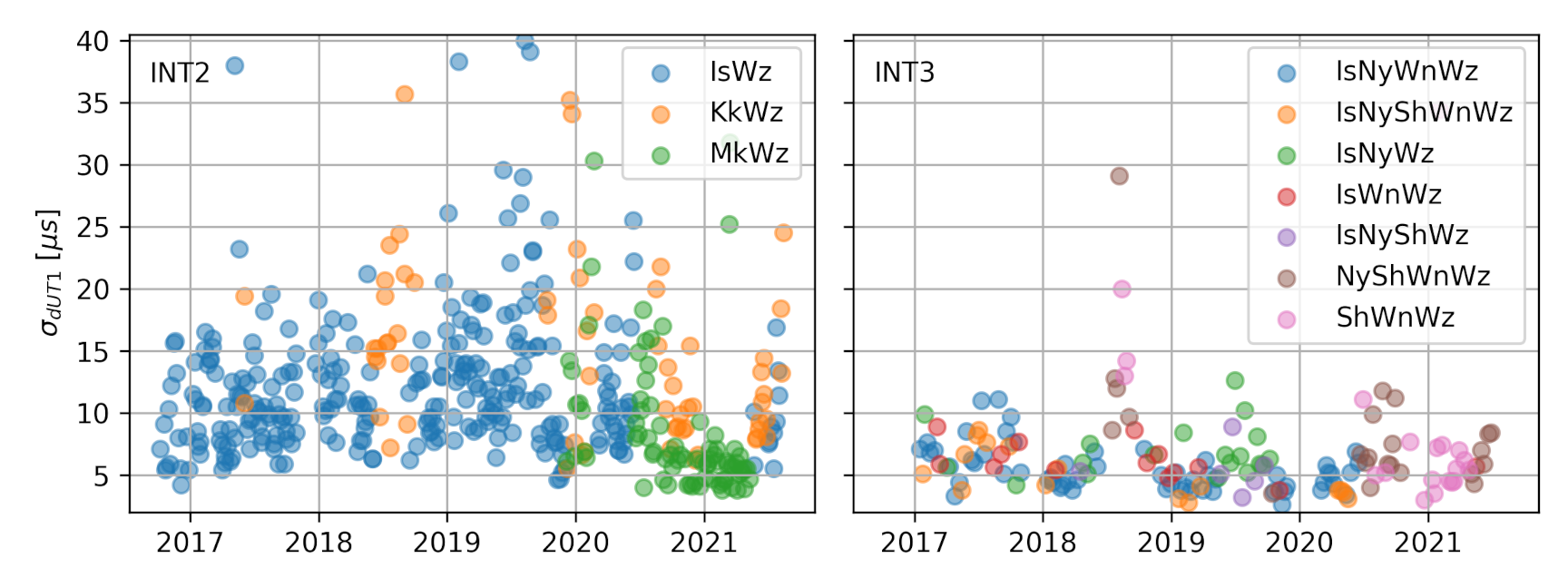New publication
"Improvements and comparison of VLBI INT2 and INT3 session performance" by Schartner et al. (2022)
Starting in 2019, the first VLBI Intensive sessions INT3 were operationally scheduled using external page VieSched++, followed by INT2 in 2020. After two years of operational (and fully automated) scheduling, we have now rigorously analyzed the session performance and compared it with the previous years. Thereby, we revealed a significant increase in dUT1 precision, as well as good agreement with IERS and JPL EOP solutions. The precision of dUT1 estimates, derived on the baseline between MK-VLBA and WETTZELL, as well as from some INT3 networs, was improved by almost 50%.
Besides advantages in VLBI scheduling, we additonally investigated and compared the official results from several IVS Analysis Centers, as well as the INT2 and INT3 product latency. Thereby, the low latency of INT3 is especially noteworthy since these sessions are typically observed with a network of up to five stations and a data rate of 1 Gbps. Therefore, INT3 is a good example of a perfect cooperation between operators, correlators, and analysts.
All these results, and more, are now published in our lates JOGE paper "Improvements and comparison of VLBI INT2 and INT3 session performance"
external page https://link.springer.com/article/10.1007/s00190-022-01621-0.
